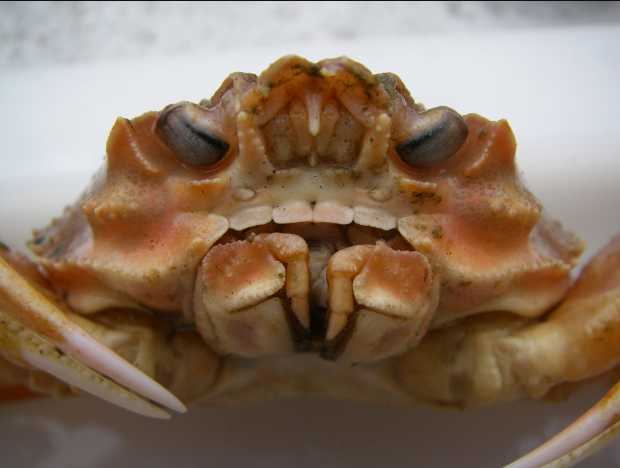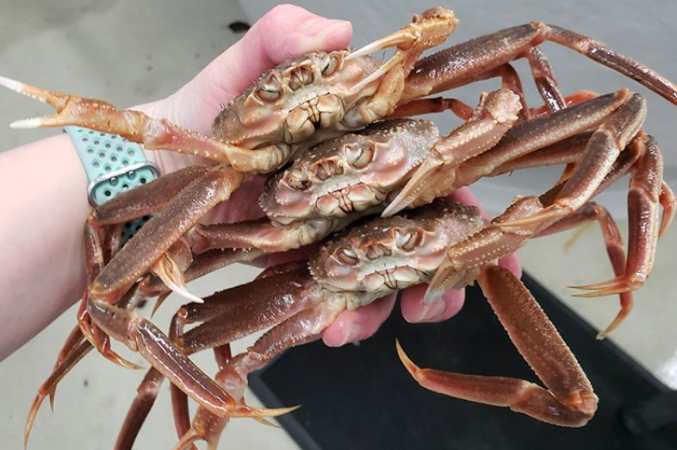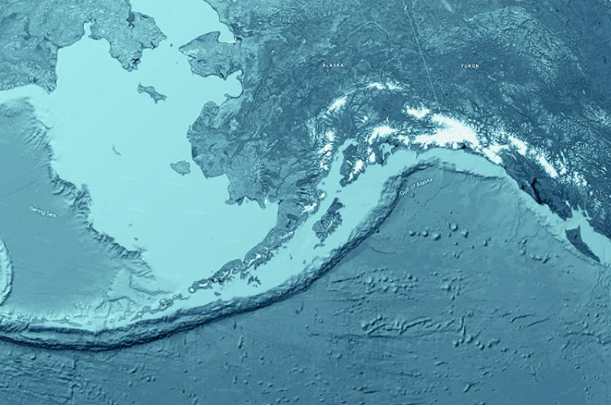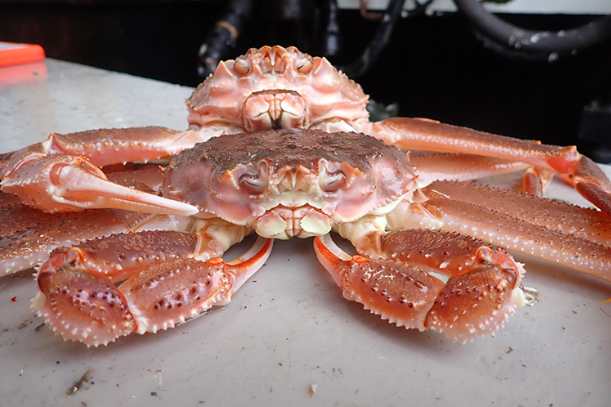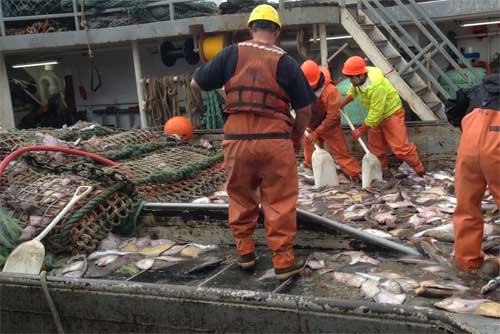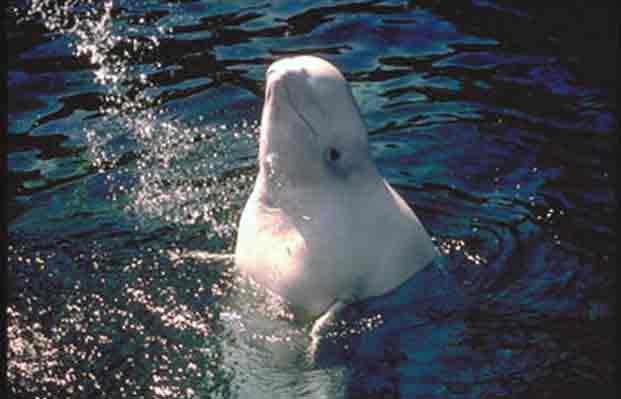NOAA Fisheries works with communities, harvesters, and processors to navigate solutions in a pinch.
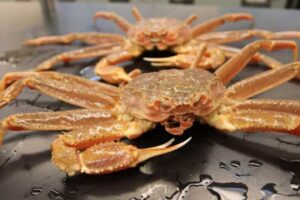
The Alaska Bering Sea snow crab fishery is open for the first time in 2 years after a sharp decline in the crab population caused fishery closures. Participants have banded together with NOAA Fisheries to use regulatory flexibilities to help the fishery operate smoothly. While the species shows signs of recovery, it is still in low abundance. There are continued challenges for harvesters, processors, and small coastal communities who depend on the fishery for their income and way of life.
We estimate that more than 10 billion snow crabs disappeared from the Bering Sea from 2018 to 2021 due to a marine heatwave and ecological shifts in the region.
The snow crab fishery is an important economic driver in Alaska, generating an average of $150 million annually from 2012 to 2021. Disaster relief funding from the Department of Commerce in 2022–2023 provided some assistance to fishing communities. With lower available stock and decreased processing capabilities after years of closures, the industry and hard-hit communities looked to existing federal regulations for new solutions to economic recovery.
Managing the Bering Sea Snow Crab Fishery
The State of Alaska and NOAA Fisheries jointly manage the commercial Bering Sea snow crab fishery with recommendations from the North Pacific Fishery Management Council under the Federal Fishery Management Plan for the Bering Sea and Aleutian Islands King and Tanner Crab Fisheries.
In 2004, the Council recommended the Crab Rationalization Program to allocate resources among harvesters, processors, and coastal communities for nine Bering Sea and Aleutian Islands crab fisheries.
NOAA Fisheries implemented the program in 2005 and developed regulations to support the process consistent with the Magnuson-Stevens Act and associated laws. We issue quota shares to harvesters and processors for Crab Rationalization fisheries, including the Bering Sea snow crab fishery.
The Crab Rationalization Program also sets regional delivery requirements for Bering Sea snow crab. Portions of the harvester quota must be delivered for processing in two regions—North and South—to support communities who have historically processed crab. But those delivery requirements can pose a challenge during periods of low abundance.
Through the Council, NOAA Fisheries establishes an annual catch limit for each Crab Rationalization stock and develops rebuilding plans for overfished crab stocks. We conduct an annual trawl survey to estimate the total number of mature snow crab in the Bering Sea. We use data collected from the survey to establish annual harvest specifications including an annual overfishing limit and an acceptable biological catch limit.
The Alaska Department of Fish and Game determines whether fisheries can open based on the annual harvest specifications and state harvest strategies. It also sets the total allowable catch. This is the maximum amount of crab that can be harvested for the season so that all crab removals remain below the amount needed to sustain the species. Using the TAC for each crab fishery, we annually issue individual fishing quotas and individual processing quotas to fishery participants.
The State of Alaska, through the Alaska Board of Fisheries process, also implements other regulations such as observer coverage and gear requirements.
Challenges for the 2024–2025 Crab Season
Data collected from the NOAA Fisheries Alaska Fisheries Science Center 2024 eastern Bering Sea bottom trawl survey estimated that the snow crab biomass was above the threshold required to open the crab fishery. Bottom temperatures during the survey were near long-term averages, which suggests positive effects on most crab species. However, snow crab abundance is still below historical averages.
In early October, the State announced the opening of the 2024–2025 snow crab season with a TAC of 4.72 million pounds— a significantly lower number than in past open seasons. In comparison, the 2020–2021 crab season TAC was 45 million pounds, bringing $219 million into fishing communities in Alaska.
Because of the low TAC, the only major processor in the North region announced it was not economically feasible to open its processing plant for the season. No alternate processing arrangements were available in the region due to economic and capacity issues after 2 years of closures. This meant harvesters with snow crab quota set for delivery in the North had nowhere to deliver their crab for processing.
Digging Into Regulations for Solutions
Although the Crab Rationalization Program requires a portion of snow crab harvester quota to be delivered in the North region for processing. Amendment 41 to the fishery management plan includes provisions for an emergency exemption to the requirement.
Recommended by the Council in 2012, the amendment was put into place to promote the safety of human life at sea and reduce economic harm. It allows participants to receive an exemption from regional delivery requirements in situations where events prevent delivery of crab to the designated regions.
“The exemption allows the fishery to adapt for unexpected situations, like processing plant closures, to help reduce lost revenue for harvesters, processors, and communities,” said Brian Brown, assistant regional administrator for the NOAA Fisheries Alaska Region Restricted Access Management division. His division manages Alaska permit programs and issues harvester and processor quota for the Crab Rationalization Program.
To receive the exemption, eligible parties must jointly apply and qualify through a two-step process:
- A preseason application, which includes a framework agreement between all applicants
- An inseason notice of exemption and exemption contract for all applicants
The RAM division processes and approves applications based on qualifications listed in the final rule for the amendment.
Working Together to Sustain the Crab Fishery
Team members from RAM division worked closely with local community representatives, fishing associations, harvesting cooperatives, and industry stakeholders throughout the application and approval process. According to Brown, the team’s goal was to make the collective effort as efficient as possible to ensure the productivity and sustainability of the fishery.
“Adaptability built into the management plan allows participants to develop custom solutions to support the fishery in a changing environment,” Brown said. “Our team focused on providing timely responses to questions and accurate information to guide participants through the process in compliance with regulations.”
Eligible parties worked together to develop private contractual arrangements that specify when and under what terms they are requesting an exemption from regional delivery requirements. They also specify the compensation, if any, that any party would provide to any other party.
The final Framework Agreement signed in December includes signatures of 27 individuals, community representatives, harvesters, processors, and industry representatives who agreed to the terms of the exemption. The agreement includes provisions to deliver the harvester quota to processors in the South while still providing some economic benefits to fishery participants in the North.
“Everyone came together to collectively agree on terms of the agreement and leverage flexibility in the regulations,” Brown remarked. “It provides financial relief to fishery participants and communities, and allows the crab fishery to continue to operate through this period of low abundance.”
[content id=”79272″]


